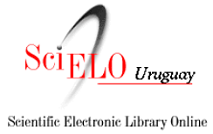"In vitro" nuclear sperm decondensation
A method to evaluate the fertilizing ability of ram semen
Keywords:
Semen, Sheep, Spermatozoa maturation, Artificial inseminationAbstract
In vitro nuclear sperm decondensation induced by selective reduction and cleavage of the chromatin disulphide bonds (SS) formed during the epididymal transit is generally considered a measure of the sperm maturation degree. In the present work, the degree of sperm maturation as determined by the in vitro induction of the nuclear decondensetion with dithiothreitol (DTT) and sodium docecylsulphate (SDS) under controlled conditions, was correlated with the fertilizing ability showed by the ram semen tested. Sperm was obtained from testes, epididimydes and complete ejaculates from healthy rams used in routine AI programs, both during active and resting sexual periods. Samples were routineIy processed according to Calvin and Bedford (1971) and technical modifications were applied to demonstrate the possible role of the seminal plasma and of some of its constituents (.e.g., Zn) on the inhibition of the nuclear sperm decondensation. Our results showed a gradual sperm maturation throughout epididymal transit, when considerad the prevalence of SS bonds present as determined by the Increased resistance to the nuclear decondensation between the testis and the epididymal tail sperm. There was a highly significant correlacion between a high resistance to the nuclear decondensetion (67%) when considering semen of high average fertility (61.84%)of non return rate (NRRI) at first servicel. The opposite also occurred in the low fertility group (36.9% NRR) with a decondensation resistance of 30.9%. When semen was processed out of the breeding season, the same correlation was seen although the percentages of decondensation resistance were significantly higher. These gametes were considered overmature and probablv with a lowered fertiliZing ability. Semin al plasma appeard as inhibiting the nuclear decondensation of ram semen, probably being the ion Zn the main responsible. It is concluded that the method of Calvin and Bedford (1971) of induced in vitro nuclear decondensation by treatment with OTT and SOS under controlled conditions, constitutes a simple and reliable method to measure the fertilizing ability of ram semen.
Downloads
Metrics
Downloads
Published
How to Cite
Issue
Section
License
Copyright (c) 1982 Sociedad de Medicina Veterinaria del Uruguay

This work is licensed under a Creative Commons Attribution-NonCommercial 4.0 International License.











